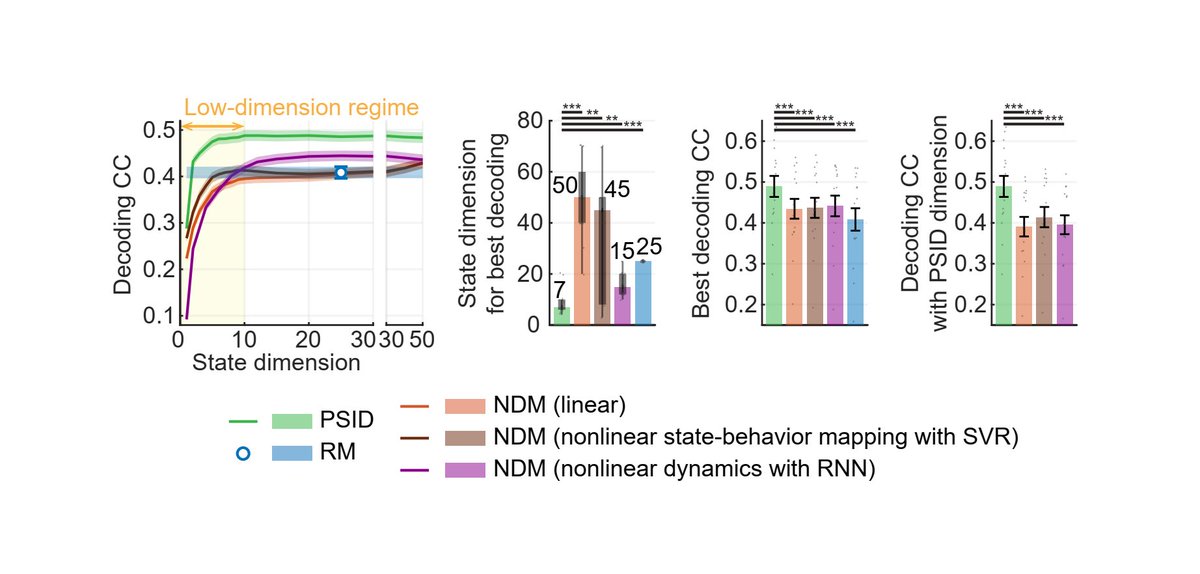
Our @NatureNeuro paper is out, first-authored by my student @omidsani. It develops PSID, a novel dynamic method to dissociate & model behaviorally relevant neural dynamics. Thanks to @salixabb, Y Wong & collaborator @pesaranlab. Summary & code below: 1/n
nature.com/articles/s4159…
nature.com/articles/s4159…
Neural dynamics recorded in an experiment relate to various behaviors and internal states simultaneously. How do we dissociate neural dynamics of a specific behavior (green) and ensure they are not masked/missed in modeling due to other dynamics (red)? PSID solves this. 2/n 

Unlike standard neural dynamic models (NDM), PSID uses neural activity & behavior jointly in training set to prioritize learning of behavior-relevant neural dynamics. Model is efficiently learned via projections. States are extracted via a real-time Kalman filter in test set. 3/n 

We apply PSID to NHP neural data in a reach-and-return movement task. PSID reveals a much lower dimension for behaviorally relevant neural dynamics and extracts them more accurately with that low dimension, as evident from its better decoding vs. even higher-dimensional NDM. 4/n 

Similar advantages held even compared with example nonlinear neural dynamic models. This shows that the PSID advantages stem from its novel joint learning method, and thus could hold compared with nonlinear methods that only consider neural activity in learning the dynamics. 5/n 

PSID can perform dynamic dimension reduction of neural activity while preserving behavior information. PSID uncovered neural rotations that reversed direction during reach vs return, were more behaviorally relevant, and were not found by standard methods (e.g. NDM, PCA). 6/n 

PSID also has an optional second stage that can learn additional neural dynamics beyond those related to the specific behavior. Doing so, it can explain more overall neural variance if desired. 7/n 

We also applied PSID to NHP prefrontal neural activity during a saccade task. PSID again found similar results, showing its generality across tasks/brain regions. In general, PSID can dissociate and model shared dynamics of any signals, e.g. signals from two brain regions. 8/n
The MATLAB/Python codes for PSID are available at github.com/ShanechiLab/PS…. We are excited to see how others might use PSID in their research.
Finally, shout out again to all coauthors @omidsani, @salixabb, Yan Wong & @pesaranlab. n/n
Finally, shout out again to all coauthors @omidsani, @salixabb, Yan Wong & @pesaranlab. n/n
And here is the SharedIt link to full-text version:
rdcu.be/b993t
Also huge thanks to all reviewers that helped us significantly add to our manuscript over the past several months!
#neurotechnology #brain #MachineLearning
@USCViterbi @USCMingHsiehEE n+1/n
rdcu.be/b993t
Also huge thanks to all reviewers that helped us significantly add to our manuscript over the past several months!
#neurotechnology #brain #MachineLearning
@USCViterbi @USCMingHsiehEE n+1/n
• • •
Missing some Tweet in this thread? You can try to
force a refresh


